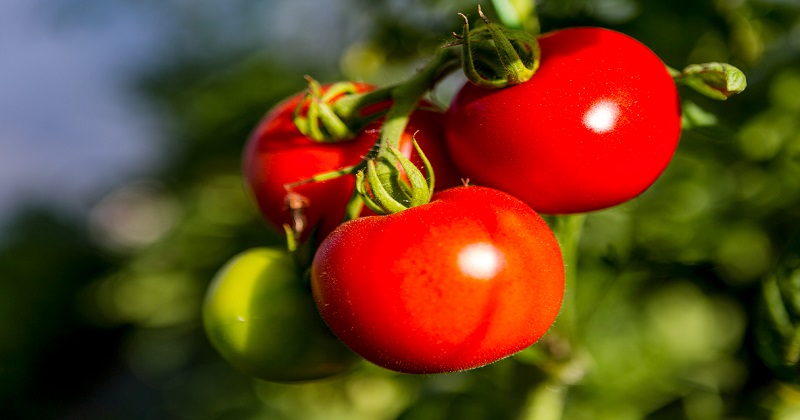
Scientists have genetically modified tomatoes that are higher in provitamin D3 – a precursor to vitamin D – and have the same nutritional value as two whole eggs or a spoonful of tuna. They achieved this by inhibiting a particular component in the plant’s DNA that increased provitamin D3 levels in both the tomato plant’s fruit and leaves. This was subsequently transformed into vitamin D3 by UVB sun exposure.
To the uninitiated, our bodies obtain vitamin D mostly from UVB sun exposure. Food, however, remains an important source. The novel tomato crop might benefit millions of people who suffer from vitamin D insufficiency, which has also been associated with increased severity of COVID-19 infection. Tomato leaves contain extremely modest quantities of provitamin D3 or 7-dehydrocholesterol (7-DHC), the building blocks of vitamin D3. Normally, provitamin D3 does not accumulate in ripe tomatoes.
The John Innes Centre employed CRISPR-Cas9 gene editing to create changes to tomato plants’ genetic coding such that provitamin D3 accumulates in the tomato fruit. The leaves of the gene-edited plants were found to contain up to 600 ug of provitamin D3 per gramme of dry weight, according to the researchers. To put things in perspective, the daily recommended dose of vitamin D for adults is just 10 ug.
According to the researchers, these leaves can be utilised to create vegan-friendly vitamin D3 supplements or for food fortification. Professor Cathie Martin of the John Innes Centre, who oversaw the study, stated that it revealed the possibility for gene editing to be used to improve the nutritional characteristics of foods. Furthermore, this procedure may be used to produce equivalent alterations in any exceptional variety of tomato.
This meant that firms may incorporate this characteristic into their patent-protected cultivars or introduce it into the tomato variety Gardener’s Delight, which has no patent protection. This method may also be applied to other solanaceous food crops such as peppers, potatoes, chillies, and brinjals.

Post Your Comments